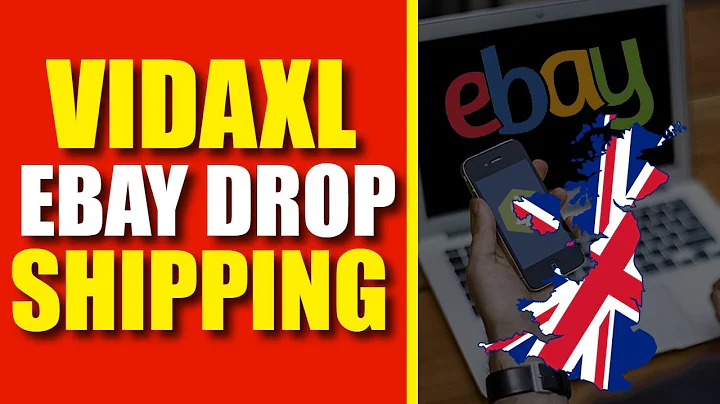Survive Stripe and PayPal Bans
Table of Contents:
- Introduction
- The Importance of Payment Processors
- Overview of Stripe and PayPal
- Issues with Stripe and PayPal
- Difficulty for Ecommerce Business Models
- High Risk of Termination
- Money Being Held in Reserve
- Margin Issues and Profitability
- Lack of Customer Support
- Alternative Payment Processors
- Authorize.net
- Researching Other Processors
- Explaining Your Business Model
- Solutions for Dealing with Issues
- Cash on Delivery
- Shop Vontavious
- Managing Shop Buy Payments
- Handling Email Tracking and Customer Support
- Insights from eCommerce Experts
- Interview with Sebastian
- Interview with Tanner Planes
- Interview with the Artist Cuban
- Q&A Session and Solutions
- Conclusion
Article:
What to Do When Stripe and PayPal Shut You Down
In the world of e-commerce, payment processors play a crucial role in facilitating transactions and ensuring smooth operations. However, there are certain challenges and downsides associated with popular platforms like Stripe and PayPal. As someone who has experienced these issues firsthand, I want to shed light on the complexities surrounding these payment processors and provide solutions for when things go wrong.
The Importance of Payment Processors
Before diving into the specific problems with Stripe and PayPal, it's essential to understand the significance of payment processors in the e-commerce landscape. These platforms act as intermediaries between businesses and customers, securely handling the transfer of funds and enabling online sales. Without reliable payment processors, conducting e-commerce activities becomes significantly more challenging.
Overview of Stripe and PayPal
Stripe and PayPal are two widely used payment processors trusted by numerous businesses worldwide. While they have their merits in terms of ease of use and widespread acceptance, they also have certain limitations and restrictions that can hinder certain business models.
Issues with Stripe and PayPal
-
Difficulty for Ecommerce Business Models: Both Stripe and PayPal are not particularly supportive of certain business models, such as e-commerce ventures like dropshipping. If they discover that your sales are being processed through their platforms for such purposes, the likelihood of account termination increases significantly.
-
High Risk of Termination: Stripe, in particular, has a history of abruptly terminating accounts, especially those associated with frequent e-commerce store operations. Once banned, it becomes challenging to create new accounts due to their extensive tracking measures.
-
Money Being Held in Reserve: A common issue faced by many users is having their funds held in reserve for extended periods. Both Stripe and PayPal may place a hold on your money, restricting your access to funds for several months. This can be frustrating, especially for individuals with limited budgets and no external sources of capital.
-
Margin Issues and Profitability: When payment processors hold a significant portion of your revenue, it diminishes your profit margins. In some cases, you may even find yourself barely breaking even or potentially operating at a loss. This financial burden can severely impact the viability of your e-commerce business.
-
Lack of Customer Support: Dealing with customer support on platforms like Stripe and PayPal can be a frustrating experience. Communication may be lacking, and their heavy-handed approach often leads to a lack of sympathy towards business owners facing difficulties.
Alternative Payment Processors
To mitigate the challenges associated with Stripe and PayPal, it's worth exploring alternative payment processor options that may align better with your business model. Some viable alternatives include:
-
Authorize.net: A reliable payment gateway that allows you to link to other payment processors, providing more flexibility for your e-commerce operations.
-
Researching Other Processors: Depending on your location, there may be regional payment processors that cater better to your needs. Conduct thorough research to identify suitable options.
-
Explaining Your Business Model: Regardless of the payment processor you choose, ensure that you clearly communicate your business model. Providing detailed information on sales numbers, refund rates, and chargebacks can help gain their trust and reduce potential issues.
Solutions for Dealing with Issues
When faced with account shutdowns or money being held, it's essential to have strategies in place to minimize the impact on your business. Consider implementing the following solutions:
-
Cash on Delivery: Offering cash on delivery as a payment option can help reduce reliance on online payment processors. This approach provides more control over the transaction process and can alleviate concerns about funds being frozen.
-
Shop Vontavious: Utilizing platforms like Shop Vontavious, which integrate payment processing within the service, can offer a seamless experience for your customers while avoiding the limitations imposed by Stripe and PayPal.
-
Managing Shop Buy Payments: If using Shopify, be aware that they may hold a portion of your revenue for a specified period. Plan your finances accordingly to accommodate these holds without compromising your cash flow.
-
Handling Email Tracking and Customer Support: One common issue with payment processors is the lack of effective customer support. Ensure you have an efficient system in place to handle email tracking and respond to customer inquiries promptly.
Insights from eCommerce Experts
To provide a well-rounded perspective on dealing with payment processor issues, I sought the insights of experienced individuals in the field. Here are their thoughts:
-
Sebastian: Sebastian shared his experience with PayPal and highlighted the challenge of margin preservation when funds are locked. He emphasized the importance of barely breaking even and staying profitable amidst potential setbacks.
-
Tanner Planes: Tanner emphasized the use of cash on delivery as an alternative payment option, particularly for those who face limitations due to age restrictions. He also advised focusing on branding and exploring Shop Buy Payments as potential solutions.
-
The Artist Cuban: The Artist Cuban's experience demonstrated the common occurrence of funds being held by payment processors. He acknowledged that these issues can hinder financial stability but also mentioned the value of communicating your business model effectively.
Q&A Session and Solutions
After gathering insights from e-commerce experts, it's evident that many individuals face similar challenges with payment processors. To further address these concerns and provide tailored solutions, I intend to conduct a Q&A session. This interactive session will aim to answer specific questions and offer practical advice for dealing with payment processor issues in the e-commerce industry. Stay tuned for further details on how to participate for free.
Conclusion
While Stripe and PayPal offer convenience for online transactions, there are inherent risks and challenges associated with using these payment processors. By understanding the limitations and exploring alternative options, you can navigate the complexities of e-commerce more effectively. Remember to communicate your business model, plan for potential setbacks, and seek advice from industry experts to ensure your e-commerce ventures thrive despite payment processor issues.










